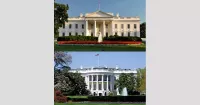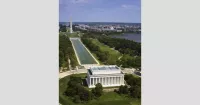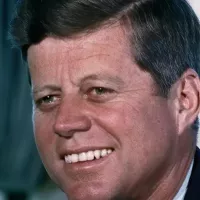A closer look at the biggest achievements of Albert Einstein. Awards, milestones, and records that define success.
Albert Einstein (1879-1955) was a German-born theoretical physicist renowned for his theory of relativity. This included the famous mass-energy equivalence formula, E=mc². He also significantly contributed to the development of quantum mechanics and received the 1921 Nobel Prize in Physics for his explanation of the photoelectric effect. His work revolutionized our understanding of gravity, space, time, and the universe. Einstein is widely considered one of the most influential scientists of the 20th century.
1905: Einstein's Miracle Year
The year 1905 is recognized as Einstein's "miracle year".
May 1919: Eclipse Tests Gravitational Lensing Theory
In May 1919, a total eclipse of the Sun provided an opportunity to test Einstein's theory of gravitational lensing. Observations by Sir Arthur Eddington yielded results consistent with Einstein's calculations, which led to widespread reporting of the confirmation of his theories.
November 1919: The Times Reports Revolution in Science
On November 7, 1919, The Times, a leading British newspaper, reported on Eddington's work with the banner headline: Revolution in Science – New Theory of the Universe – Newtonian Ideas Overthrown. This marked the widespread recognition of Einstein's theories.
1919: Confirmation of General Relativity
In 1919, Einstein became a scientific celebrity after the confirmation of his general theory of relativity, gaining widespread recognition and admiration.
1919: Acceptance of Light Quanta
In 1919, Robert Millikan's experiments on the photoelectric effect and Compton scattering led to the universal acceptance of Einstein's light quanta theory, which he initially postulated in 1905.
1920: Elected to Royal Netherlands Academy
In 1920, Einstein was elected a Foreign Member of the Royal Netherlands Academy of Arts and Sciences.
1921: Nobel Prize in Physics
In 1921, Albert Einstein received the Nobel Prize in Physics for his services to theoretical physics, especially for his discovery of the law of the photoelectric effect.
1921: Elected to Royal Society
In 1921, Einstein was elected a Foreign Member of the Royal Society.
1922: Nobel Prize Awarded
In 1922, Albert Einstein was awarded the 1921 Nobel Prize in Physics for his services to Theoretical Physics, and especially for his discovery of the law of the photoelectric effect.
1922: Awarded Nobel Prize
In 1922, Einstein was awarded the 1921 Nobel Prize in Physics for his discovery of the law of the photoelectric effect.
1922: Nobel Prize Ceremony Absence
In 1922, Einstein's tour of the eastern hemisphere prevented him from attending the Nobel Prize ceremony in Stockholm. A German diplomat accepted the prize on his behalf and gave a speech praising Einstein's contributions to physics and his advocacy for peace.
1923: Membership in Spanish Academy of Sciences
In 1923, during a two-week visit to Spain, Einstein was awarded membership in the Spanish Academy of Sciences, signified by a diploma presented to him by King Alfonso XIII. He also met fellow Nobel laureate Santiago Ramón y Cajal during the trip.
1924: Elected to American Academy of Arts and Sciences
In 1924, Einstein was elected an International Honorary Member of the American Academy of Arts and Sciences.
1925: Awarded Copley Medal
In 1925, Einstein was awarded the Royal Society's Copley Medal.
November 1930: Einstein-Szilárd Refrigerator Patent
In November 1930, U.S. patent 1,781,541 was awarded to Albert Einstein and Leó Szilárd for the Einstein refrigerator invention.
1930: Elected to American Philosophical Society
In 1930, Einstein was elected an International Member of the American Philosophical Society.
April 1933: Aided by Academic Assistance Council
In April 1933, Einstein was aided by the Academic Assistance Council, founded by William Beveridge, to help academics escape Nazi persecution, facilitating his departure from Germany.
July 1933: Visit to England and Protection
In late July 1933, Einstein visited England for about six weeks at the invitation of Commander Oliver Locker-Lampson, staying in a secluded wooden cabin on Roughton Heath in Norfolk. Locker-Lampson provided bodyguards for Einstein's protection, which was publicized in the Daily Herald on July 24, 1933.
1946: Einstein Visits Lincoln University
In 1946, Albert Einstein visited Lincoln University, a historically black college in Pennsylvania, where he was awarded an honorary degree and gave a speech about racism in America.
November 1952: Einstein Offered Presidency of Israel
In November 1952, Prime Minister David Ben-Gurion offered Albert Einstein the largely ceremonial position of President of Israel following Weizmann's death. Einstein declined, expressing he was "deeply moved" but unable to accept.
1955: Mount Einstein (Alaska) Named
Mount Einstein in the Chugach Mountains of Alaska was named in 1955 in honor of Albert Einstein.
1960: Einstein Posthumously Included in World Academy of Art and Science
In 1960, Albert Einstein was posthumously included as a charter member of the World Academy of Art and Science (WAAS), an organization dedicated to the responsible and ethical advances of science, especially concerning nuclear weapons.
1970: Mount Einstein (New Zealand) Named
In 1970, Mount Einstein in New Zealand's Paparoa Range was named after Albert Einstein by the Department of Scientific and Industrial Research.
1979: Albert Einstein Memorial Unveiling
In 1979, the Albert Einstein Memorial was unveiled outside the National Academy of Sciences building in Washington, D.C., featuring Einstein holding a paper with equations for the photoelectric effect, general relativity, and mass-energy equivalence.
1999: Time's Person of the Century
In 1999, Albert Einstein was named Time's Person of the Century.
1999: Greatest Physicist Ever Survey
In 1999, a survey of top 100 physicists voted Albert Einstein as the "greatest physicist ever", while a survey of rank-and-file physicists ranked him second to Isaac Newton.
2005: World Year of Physics
In 2005, the International Union of Pure and Applied Physics declared it the "World Year of Physics", also known as "Einstein Year", in recognition of Einstein's "miracle year" in 1905. It was also declared the "International Year of Physics" by the United Nations.
September 2015: Confirmation of Einstein's Prediction of Gravitational Waves
In February 2016, researchers at LIGO confirmed Einstein's prediction by publishing the first observation of gravitational waves, detected on Earth on September 14, 2015, nearly a century after the prediction.
February 2016: Confirmation of Einstein's Prediction of Gravitational Waves
In February 2016, researchers at LIGO confirmed Einstein's prediction by publishing the first observation of gravitational waves, detected on Earth on September 14, 2015, nearly a century after the prediction.
Mentioned in this timeline

The White House located at Pennsylvania Avenue NW in Washington...
California is a U S state on the Pacific Coast...
India officially the Republic of India is a South Asian...
New Zealand is an island country located in the southwestern...

Washington D C is the capital city and federal district...
Germany officially the Federal Republic of Germany is a Western...
Trending
1 month ago India-Bangladesh Ties Strained as Hasina Faces Potential Execution; Extradition Unlikely.
1 month ago Tesla Approved to Launch Autonomous Rideshare Service in Arizona: A New Era
Jaden McDaniels is an American professional basketball player currently playing for the Minnesota Timberwolves in the NBA He played college...

9 months ago Dire Wolf's potential return clashes with Trump's endangered species policy; de-extinction questioned.

28 days ago Trump Pardons Gobble and Waddle: A Thanksgiving Tradition Continues with Presidential Humor.

1 month ago Peyton Watson's Opportunity: Millions on Nuggets Roster and Denver Breakout Potential.
Popular

Ben Shapiro is a prominent American conservative political commentator media...

XXXTentacion born Jahseh Dwayne Ricardo Onfroy was a controversial yet...

Candace Owens is an American conservative political commentator and author...

William Franklin Graham III commonly known as Franklin Graham is...
The Kennedy Center Honors are annual awards recognizing individuals and...

John F Kennedy JFK was the th U S President...
